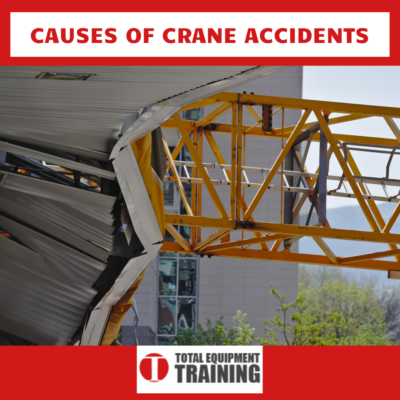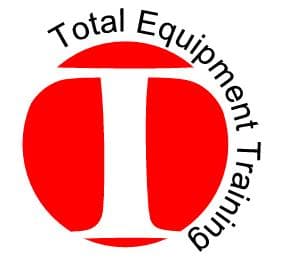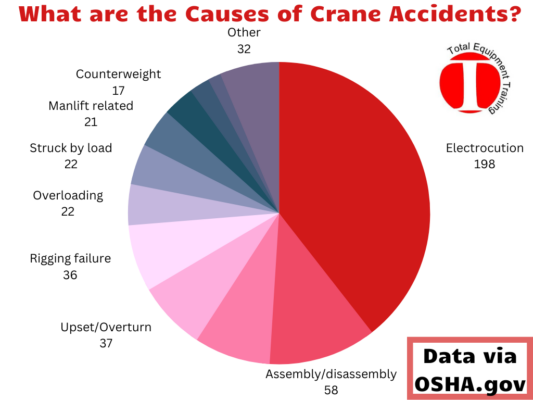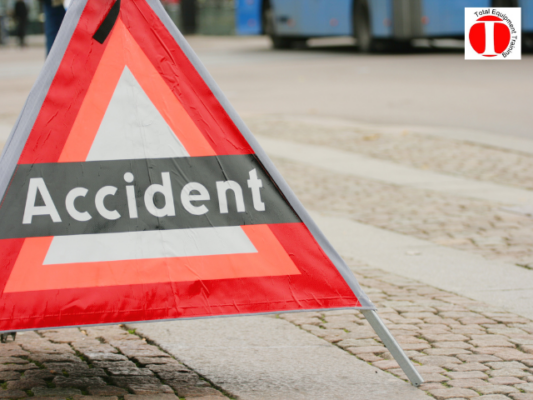
Construction and the heavy equipment industry are a booming cornerstone of the world’s economy, employing millions across the world. These industries utilize some of the most powerful machinery ever developed to extract raw materials from the earth, transport them, process them, and bring it all together to create structures to ease society’s daily living.
However, due to the nature of the work being done, it also carries the greatest risk to damage structures, incur bodily harm, or even lead to fatal injury. To mitigate this, regulatory bodies such as OSHA have been established to create safety protocols and procedures to prevent harm to people and their surroundings.
Cranes, in all their varieties, are frequently used implements across several facets of these industries and are not exempt from causing potential harm. Let us have a deeper look at the causes of accidents and what can be done to make the worksite safer.
Schedule On-Site Crane Training to avoid crane accidents
What Are the Most Common Types of Crane Accidents
Reasons behind crane accidents include:
- The crane buckling or collapsing.
Most cranes have support structures (such as stabilizers and outriggers) that prevent them from moving as they operate. If they are set up on unstable ground or surpass their weight limits during a hoisting operation, the crane is likely to tip over or collapse. - Improper assembly.
Setting up the crane to properly operate is straightforward, but if done improperly, can cause accidents. Unnecessary extension of the boom without manufacturer manual reference or improper use of blocking supports are common aspects of improper crane assembly. - Improper/Insufficient employee training.
Crane operators can ignore safety hazards if they are unaware of potential risks they could pose to their colleagues and nearby structures. Lack of, or unavailability of a signal person is also a safety risk. All workers on site should be aware of the crane’s operational range, and have some training on safety protocols, such as emergency hand signals. - Mechanical failure.
This is often as a result of poor maintenance. The crane’s moving components wear out, which may cause them to malfunction and thus cause bodily harm or structural damage. - Electrocution
This is most often encountered when an uninsulated part of the crane comes into contact with live electrical wires.
Total Equipment Training not only comes to your work site to perform heavy equipment training, we are a great resource for information. Continue reading about the most common mobile crane accidents.
OSHA Crane Accident Statistics
OSHA has identified the following as the most common/major causes of crane accidents:
- The crane or its boom coming into contact with live power lines (39%)
- Crane assembly/disassembly (12%)
- Boom buckling/collapse (8%)
- Crane upset/overturn (7%)
- Rigging failure (7%)
- Overloading (4%)
- Struck by moving load (4%)
- Man-lift related accidents (4%)
- Working within radius of counterweight (3%)
- Two-blocking (2%)
- Hoist limitations (1%)
- Other causes (6%)
NCCCO Mobile Crane Study Guide
Ways to Prevent Crane Accidents
Proper care and attention is essential to prevent crane accidents. Most safety measures end up getting ignored in attempts to cut corners or to save on time and cost, ending up being more expensive and causing harm. Some preventative measures for crane accidents include:
- Setting up the crane on safe, sturdy surfaces. This prevents the crane from buckling and possibly collapsing as it carries out operations.
- Operating the crane well clear of live wires, with OSHA recommending a minimum 20-foot distance.
- Carry out regular inspections. Inspections provide a clear image of the crane’s status, allowing for recommendations on repair and maintenance on worn and wearing components. Click here for a FREE overhead crane inspection form.
- All staff working with the crane (operators, riggers, signal persons) should be qualified and competent/certified for their respective roles.
Schedule online crane safety training
Checklist for Crane Safety
To help improve safety at the workplace, it is important to follow these safety guidelines:
- Plan safe operations – Identify danger zones and hazards and communicate work operations to all relevant staff.
- Avoid overloading the crane
- Ensure rigging is well done to avoid risk of falling materials
- Set up and test all communication channels before any crane operation
- Have inspections done by a qualified person
- Train and certify crane operators and signal persons
Crane Accident Safety Tips
To help avoid crane accidents, it is advisable to:
- Always utilize qualified personnel
- Read and understand operator manuals
- Choose the right crane type for the job
- Always carry out qualitative daily crane inspections
- Avoid or clear obstacles (real and potential) of crane travel
Contact TET for OSHA-compliant crane training
Avoid Lawsuits Involving Crane Accidents
As an employer, it is possible to mitigate losses from potential lawsuits with proper training. Some accidents are unavoidable and cannot be attributed to human or mechanical error, but following several of the safety measures above will have them few and far between. Total Equipment Training will come to your workplace to perform heavy equipment training. Call today to schedule: (610) 321-2679.
Prevent a Crane Accident Today: Schedule with Total Equipment Training
Total Equipment Training is a nationally recognized OSHA-compliant organization equipped with experienced and skilled staff ready to offer a variety of services from training your operators, site supervisors, riggers, signal persons, etc., as well as, performing your crane inspections. Reach out today to make sure you are meeting OSHA’s guidelines for a safe and efficient work environment.



